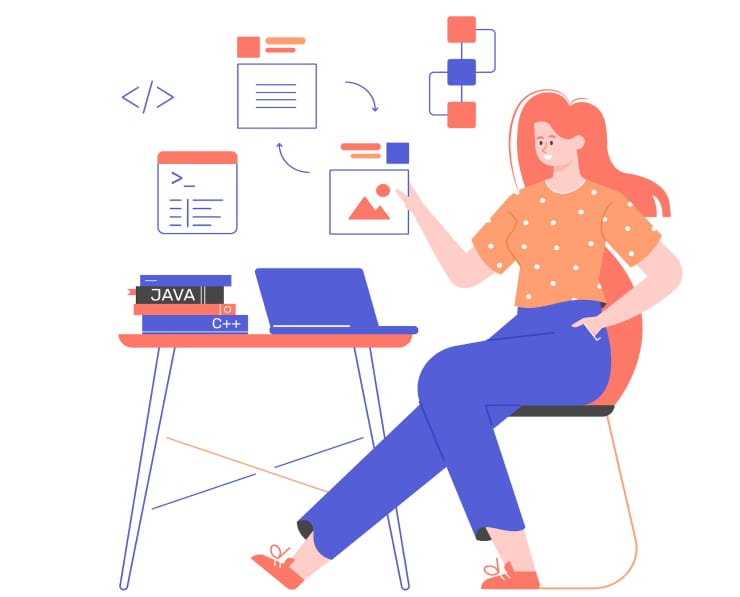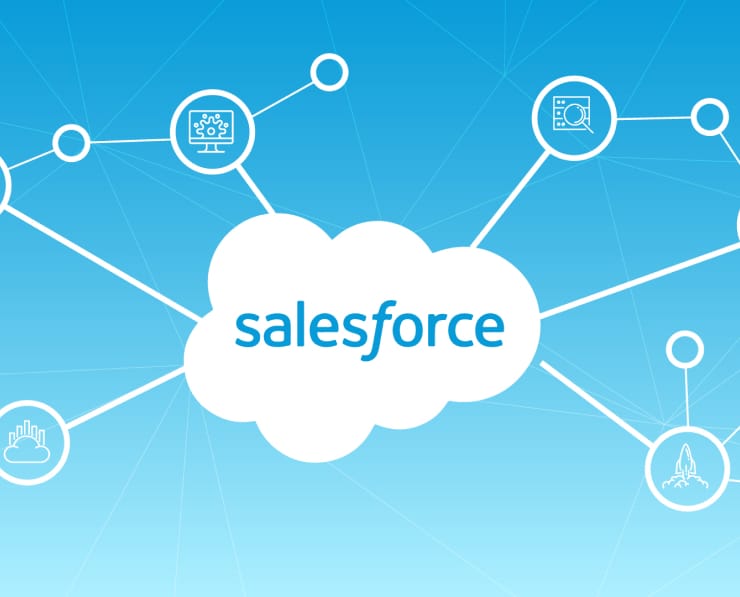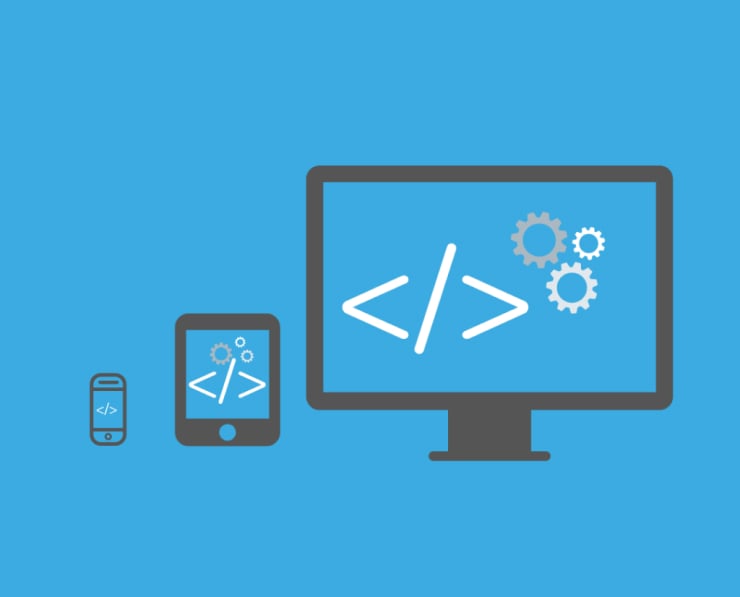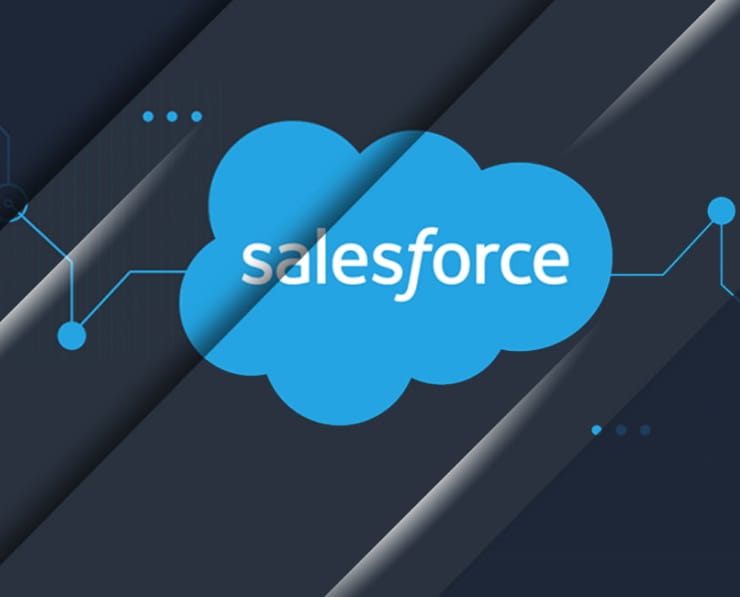Student Feedback
ADM-211: Administration Essentials for Experienced Admin Certification Video Training Course Outline
Getting Started
Extending Custom Objects and App...
Extending Custom Objects and App...
Extending Custom Objects and App...
Security and Access : Object Lev...
Security and Access : Record Lev...
Security and Access : Field Leve...
Security and Access : Delegated ...
Security and Access : Enterprise...
Process Automation : Overview
Process Automation : Troubleshoo...
Process Automation : Lightning P...
Process Automation : When to use...
Data Management : Overview
Data Management : Proactive Meas...
Data Management : Reactive Measu...
Data Management : Best Practices
Data Management : Data Enrichment
Data Management : Data Archival
Auditing and Monitoring : Overview
Auditing and Monitoring : Auditing
Auditing and Monitoring : Monito...
Content Management
Content Management : Salesforce ...
Change Management : Overview
Change Management : Managing San...
Change Management : Metadata Export
Change Management : Metadata Dep...
Sales Cloud Applications : Campa...
Sales Cloud Applications : Lead ...
Sales Cloud Applications : Accou...
Sales Cloud Applications : Produ...
Sales Cloud Applications : Oppor...
Sales Cloud Applications : Quote...
Sales Cloud Applications : Colla...
Service Cloud Applications : Cas...
Service cloud Applications : Ent...
Service Cloud Applications : Int...
Service Cloud Applications : Kno...
Analytics,Reports and Dashboards
Getting Started
ADM-211: Administration Essentials for Experienced Admin Certification Video Training Course Info
Salesforce Advanced Administrator Training – ADM-211 Preparation Course
Salesforce Administration Mastery for Advanced Administrators is an in-depth and comprehensive training program designed for experienced Salesforce professionals who wish to refine, expand, and strengthen their understanding of the Salesforce platform. This course aims to build upon foundational Salesforce administration knowledge by diving deeper into the advanced areas of configuration, automation, analytics, and data management. It is meticulously designed to transform intermediate administrators into advanced-level experts capable of handling complex business needs and organizational requirements with confidence. The course offers extensive hands-on experience, challenging exercises, and scenario-based learning that simulate real-world administrative challenges. Participants will explore advanced customization options, security controls, data management practices, and automation techniques that streamline operations and enhance system efficiency. This program is crafted for administrators who are familiar with the Salesforce ecosystem and aspire to take their technical and strategic understanding to a professional level. Through practical exercises and structured modules, learners will master Salesforce’s advanced tools such as the Lightning App Builder, Flow, advanced reporting features, and security management. By the end of the course, participants will have acquired the expertise necessary to not only configure and optimize Salesforce solutions but also to lead administrative strategies within their organizations.
Salesforce Administration Mastery for Advanced Administrators provides a clear and structured path to develop an administrator’s skills beyond the basics. It prepares learners for real-world challenges and for certification exams that validate their proficiency in Salesforce administration at an advanced level. Through interactive labs and guided learning, participants will be able to confidently manage complex system configurations, implement automation frameworks, secure organizational data, and generate insightful analytics for decision-making. This course serves as both a professional advancement tool and a preparatory journey toward Salesforce certification recognition.
What You Will Learn from This Course
Gain advanced understanding of Salesforce configuration and setup including company-wide settings, security models, and user management.
Learn to manage and customize objects, fields, and relationships within the Object Manager and understand the architecture of Salesforce data models.
Explore advanced automation processes using Flow, Process Builder, and approval workflows to streamline business operations.
Develop expertise in managing complex data operations such as importing, exporting, validating, and maintaining data integrity.
Build and analyze advanced dashboards and reports that deliver actionable insights to support business goals.
Understand the full capabilities of Salesforce Sales Cloud and Service Cloud, including case management, opportunity pipelines, and campaign automation.
Gain practical skills to manage security, permissions, profiles, and sharing rules effectively across users and departments.
Learn how to design optimized user experiences using Lightning App Builder and customized record types.
Master collaboration tools like Chatter, mobile app features, and AppExchange solutions to enhance productivity across teams.
Prepare strategically for the Salesforce Certified Advanced Administrator certification exam through structured topic coverage and practice-based learning.
Learning Objectives
The primary objective of this course is to elevate the skill level of Salesforce administrators so they can operate at an advanced professional standard. Learners will develop the technical, analytical, and strategic thinking required to manage and enhance Salesforce environments at scale. Key learning outcomes include:
Understanding and implementing advanced organization-wide settings that influence data accessibility, fiscal management, and operational efficiency.
Applying Salesforce’s sharing and security models to control data visibility and ensure compliance with organizational policies.
Customizing the Salesforce interface for optimal usability by configuring page layouts, record types, and business processes tailored to department-specific needs.
Managing sales and marketing processes effectively by configuring lead management, campaign tracking, opportunity stages, and forecasting mechanisms.
Automating repetitive administrative and operational tasks to increase productivity and reduce human error.
Designing reports and dashboards that reflect accurate, real-time performance metrics across departments and business functions.
Handling complex data operations with confidence including backup strategies, mass updates, imports, exports, and validation.
Utilizing Salesforce’s mobile and collaboration tools to enhance communication and engagement across teams.
Developing analytical insights that guide data-driven decision-making through advanced reporting and visualization tools.
Acquiring the comprehensive understanding necessary to attempt and pass the Salesforce Advanced Administrator certification exam.
Requirements
Participants should have a fundamental understanding of Salesforce administration principles before enrolling in this advanced course. A basic familiarity with concepts such as user setup, object customization, workflow automation, and data management is highly recommended. Learners are encouraged to have prior experience in managing a Salesforce environment for at least six months to one year. It is also beneficial for participants to have completed foundational Salesforce Administrator training or possess the equivalent knowledge gained through hands-on experience. A working knowledge of business processes, data flow, and organizational structure will further enhance comprehension of the material. Access to a Salesforce Developer Edition or sandbox environment is essential to practice exercises and real-time configurations covered in the course. Participants should have a stable internet connection, a modern browser, and administrative access to Salesforce for effective hands-on learning. No prior programming skills are required, as the focus remains on declarative, click-based configurations and automation solutions.
Course Description
Salesforce Administration Mastery for Advanced Administrators offers an immersive and detailed exploration of the Salesforce platform from an administrative perspective. The course is divided into comprehensive modules, each covering a crucial area of advanced Salesforce administration. It begins with an introduction to organizational settings and security management, explaining how to manage fiscal year settings, business hours, currencies, and other company-level parameters. Participants will learn how to configure and maintain user access, define roles and hierarchies, and apply organization-wide defaults and sharing rules to manage data visibility. The course then transitions into Object Management and the Lightning App Builder, guiding learners through the process of creating, modifying, and optimizing standard and custom objects. This section emphasizes relationship modeling, master-detail structures, and the implications of field dependencies and deletions.
Subsequent modules cover advanced Sales and Service applications. Learners will explore how to manage the sales process efficiently by configuring lead assignment, campaign tracking, opportunity forecasting, and sales productivity tools like Einstein Scoring and Path. The Service module focuses on case management and support automation through escalation rules, queues, and response workflows. This ensures that participants can handle both customer acquisition and service processes with equal proficiency.
A key highlight of the course is its extensive focus on data and analytics management. Participants will learn how to safely manage large datasets, execute data imports and exports, perform backups, and use validation tools to maintain data quality. The reporting and dashboard segment introduces learners to dynamic reporting features, report types, and data visualization practices. This allows administrators to deliver insightful business intelligence through dashboards that reflect operational trends and key performance indicators.
The workflow and automation module is designed to develop expertise in automating business processes using Salesforce Flow, Process Builder, and approval workflows. Learners will explore how to design efficient automation structures that save time, eliminate redundant manual actions, and ensure accuracy across departments. They will also learn the differences between automation tools, when to use each, and how to build complex flows that adapt to varying business scenarios.
The productivity and collaboration section emphasizes the use of Salesforce’s mobile capabilities, activity tracking, and Chatter for enhancing internal communication. Participants will also explore AppExchange applications and identify how third-party integrations can expand Salesforce functionality.
Throughout the course, learners are exposed to real-world administrative challenges and guided through practical solutions that align with Salesforce best practices. Each module includes applied exercises, case studies, and practical examples that encourage critical thinking and reinforce theoretical understanding. Upon completion, learners will have gained both technical mastery and the strategic insight required to optimize Salesforce environments for organizational success.
Target Audience
This course is ideal for individuals who already possess foundational Salesforce administration knowledge and are ready to take the next step toward advanced mastery. It is particularly suited for:
Experienced Salesforce administrators who manage mid-sized to large organizational instances and wish to deepen their expertise.
Professionals aiming to qualify for the Salesforce Certified Advanced Administrator certification exam.
Business analysts, operations managers, and consultants who rely on Salesforce data and workflows to support business operations.
IT professionals transitioning into Salesforce ecosystem roles who want to strengthen their declarative and configuration skills.
System administrators responsible for managing user access, automation, and security at an enterprise level.
Team leads and CRM specialists seeking to improve their technical proficiency and process efficiency within Salesforce.
Organizations seeking to enhance the capabilities of their administrative staff by training them in advanced Salesforce features and automation.
Whether you are working in sales, service, or operations, this course empowers you to take control of complex system configurations and align them with strategic business goals. It caters to those who aspire not only to manage but also to innovate and lead Salesforce administration initiatives within their companies.
Prerequisites
Before enrolling, learners should have a sound understanding of Salesforce fundamentals and basic administrative functions. Prior completion of the Salesforce Certified Administrator course or equivalent work experience is strongly recommended. Participants should be comfortable with creating and managing users, configuring basic security settings, setting up objects and fields, and building simple reports and dashboards. Familiarity with Salesforce’s standard objects such as Accounts, Contacts, Leads, and Opportunities will be essential for maximizing learning outcomes. A hands-on understanding of how to navigate the Salesforce setup menu, create page layouts, and use the Lightning App Builder will also prove beneficial. Access to a Salesforce environment (sandbox or developer org) is necessary for practice exercises. While coding or programming knowledge is not required, an analytical mindset and interest in process optimization will greatly support success in this course.
Salesforce Administration Mastery for Advanced Administrators is structured to make the transition from intermediate to expert seamless and engaging. It equips learners with advanced technical insights, operational confidence, and professional readiness for higher-level Salesforce responsibilities. Through guided instruction and extensive practical exercises, participants gain mastery over Salesforce tools, security frameworks, automation systems, and data analytics capabilities that empower them to build, secure, and optimize Salesforce environments effectively.
Course Modules/Sections
The Salesforce Administration Mastery for Advanced Administrators program is organized into multiple comprehensive modules that are meticulously designed to provide a progressive and immersive learning experience. Each module builds upon the previous one, ensuring learners gain both theoretical understanding and practical mastery of Salesforce’s advanced administrative functionalities. The course begins with foundational reinforcement and then transitions into deep exploration of Salesforce’s configuration, data management, automation, and analytics capabilities.
The first module, Configuration and Setup, focuses on advanced organization-level settings that govern how Salesforce operates across departments and teams. Learners explore company information, fiscal year settings, currency management, and the influence of these parameters on business operations. Participants will gain practical experience in setting up users, assigning appropriate permissions, and applying organizational security controls such as login restrictions, password policies, and session settings. This module also introduces advanced topics like the Salesforce sharing model, roles, subordinates, and hierarchical access management to ensure that data visibility aligns with company policies.
The second module, Object Manager and Lightning App Builder, delves deeply into Salesforce’s data architecture. Learners will explore how standard and custom objects are structured, how relationships between them affect data integrity, and how to design effective data models using master-detail, lookup, and junction relationships. They will practice creating and customizing fields, managing record types, and controlling page layouts for both standard and custom objects. Additionally, participants will learn to leverage the Lightning App Builder to create personalized and efficient user experiences that align with specific business needs.
The third module, Sales and Marketing Applications, covers the end-to-end management of Salesforce’s Sales Cloud and Marketing features. Learners will understand how to configure and optimize the sales process using tools like sales paths, forecasting, and Einstein Opportunity Scoring. The module emphasizes lead management, from capture to conversion, along with campaign creation, campaign member management, and tracking the performance of marketing initiatives. Participants will explore automation strategies that improve lead assignments, streamline opportunity progression, and enhance sales productivity through Salesforce’s built-in intelligence tools.
The fourth module, Service and Support Applications, provides detailed instruction on how to use Salesforce’s Service Cloud features to enhance customer support operations. Learners will understand how to configure case management, build support processes, and automate case assignments using queues, escalation rules, and auto-response mechanisms. They will learn to create service-level agreements and use tools that ensure timely and consistent responses to customer inquiries. By mastering these capabilities, administrators will be able to support service teams more effectively, improve customer satisfaction, and monitor service performance metrics.
The fifth module, Productivity and Collaboration, emphasizes the importance of communication and teamwork within Salesforce. Participants will explore tools like Chatter for internal collaboration, activity management for tracking tasks and events, and the Salesforce Mobile App for accessing Salesforce data on the go. Learners will also study how AppExchange can extend Salesforce’s functionality by integrating external applications that meet specific business requirements. This module helps participants understand how to optimize user engagement and ensure consistent collaboration across teams, departments, and devices.
The sixth module, Data and Analytics Management, equips learners with advanced techniques for managing and maintaining high-quality data. Topics include data import and export best practices, mass data operations, data validation rules, and backup strategies. Participants will explore how data security and sharing models affect report generation and dashboard visibility. This module also introduces advanced reporting techniques such as creating custom report types, using joined reports, and leveraging dynamic dashboards to present data-driven insights. Learners will develop an analytical mindset that allows them to design dashboards tailored to specific roles, ensuring that decision-makers receive actionable and relevant information.
The seventh module, Workflow and Process Automation, is a core component of the course and focuses on Salesforce’s automation tools that eliminate manual processes and improve operational efficiency. Learners will explore the use of Flows, Process Builder, and Approval Processes to design automated solutions for complex business scenarios. They will learn to determine which tool is most appropriate based on requirements, how to build and troubleshoot automation, and how to create logical approval structures that ensure organizational compliance. This module emphasizes practical implementation through scenario-based exercises where learners design and deploy automated processes that solve realistic business challenges.
Each module concludes with practical exercises and scenario-driven labs to reinforce key concepts and allow learners to apply their knowledge in a simulated Salesforce environment. This modular structure ensures that participants develop a holistic understanding of Salesforce’s administrative functions while gaining specialized expertise in areas critical to advanced administration.
Key Topics Covered
Throughout the Salesforce Administration Mastery for Advanced Administrators course, participants will cover an extensive range of topics that reflect both real-world administrative needs and the requirements of advanced certification exams. The course material spans Salesforce configuration, automation, analytics, and user management, ensuring comprehensive coverage of every core aspect of advanced administration.
Key topics include company-wide settings management, where learners will understand how fiscal year configurations, currency conversions, and business hours impact system behavior. Advanced security and sharing models are explored in depth, focusing on controlling access through roles, permission sets, profiles, and organization-wide defaults. Participants learn how to balance data accessibility with security through thoughtful configuration of sharing rules and hierarchy structures.
In object management, learners will study Salesforce’s data architecture to understand standard objects and relationships. They will practice creating custom fields, managing field dependencies, and designing relational data models using junction objects. Page layout customization and Lightning App Builder usage will be discussed to enhance the end-user experience.
The course also highlights Salesforce’s sales and marketing capabilities. Learners will examine the sales process from lead generation to opportunity closure and apply automation to improve productivity. Topics include campaign management, lead assignment rules, Einstein opportunity scoring, forecasting, and pipeline visualization. These lessons help administrators support sales teams with accurate, efficient tools that optimize performance tracking and forecasting accuracy.
For service management, the course addresses case lifecycle handling, case assignment automation, escalation processes, and queue management. Learners will understand how to implement Service Cloud features to enhance customer satisfaction and support efficiency. They will also examine metrics for evaluating service performance and configuring dashboards that reflect case volume and resolution times.
Data management and analytics are central to the advanced administrator’s role. Learners will master data import and export techniques, understand the implications of data manipulation operations, and design validation rules that maintain data integrity. Reporting and dashboard customization will be explored thoroughly, with attention given to filtering data, managing report types, and designing interactive dashboards. Participants will gain experience building dashboards that allow executives and managers to interpret real-time organizational performance.
The automation segment of the course delves into Flow and Process Builder in extensive detail. Learners will identify automation opportunities, define decision paths, and create approval workflows that simplify approval chains. They will also troubleshoot and optimize existing automations for better performance.
Other significant topics include mobile administration, AppExchange integration, and the strategic use of collaboration tools like Chatter and Salesforce Mobile App. These areas are covered to ensure that administrators can manage Salesforce not only as a desktop application but also as a mobile-enabled, collaborative platform that supports dynamic business operations.
By covering these comprehensive topics, learners gain a well-rounded and deep understanding of Salesforce that extends beyond basic administration and into strategic system management. The course equips them with the expertise needed to confidently manage large-scale Salesforce implementations and provide continuous improvement within their organizations.
Teaching Methodology
The Salesforce Administration Mastery for Advanced Administrators course follows a hands-on, scenario-based learning methodology that combines theoretical understanding with practical implementation. Each topic is introduced through structured lessons that explain concepts clearly and demonstrate their real-world applications within Salesforce. The instructional design focuses on a balance between guided learning, independent exploration, and applied practice to ensure participants gain both conceptual depth and technical skill.
The course begins with conceptual briefings, where instructors explain key principles and system architecture using visual diagrams and real examples from active Salesforce environments. Learners are encouraged to understand not only what to do but why each configuration or setting is applied in a particular way. Following each theoretical section, participants engage in hands-on exercises using a Salesforce Developer Edition or sandbox environment, allowing them to immediately apply the lessons learned. This active engagement reinforces understanding and builds practical confidence.
The teaching approach is based on progressive complexity, starting with fundamental reinforcement and moving into advanced administrative practices. Instructors present real-world scenarios that require learners to diagnose system issues, design automation processes, or optimize data flow. Case studies drawn from multiple industries help learners understand how Salesforce administration principles adapt to various business models.
Interactive workshops and live demonstrations are integrated throughout the modules. These sessions provide learners with opportunities to observe advanced Salesforce configurations in real time, ask questions, and discuss alternative solutions to common administrative challenges. The methodology emphasizes collaboration through peer discussions, instructor feedback, and practical projects that simulate enterprise-level administrative environments.
Additionally, the course includes guided walkthroughs for setting up automation processes, managing security, and creating advanced dashboards. Learners are encouraged to experiment with Salesforce’s declarative tools, such as Lightning App Builder and Flow, to strengthen their ability to think critically and innovate solutions independently. The teaching philosophy promotes iterative learning—encouraging learners to test, review, and refine their configurations.
This experiential approach ensures that by the end of the course, participants not only understand Salesforce’s administrative features but are capable of implementing, managing, and troubleshooting them effectively in complex environments. The combination of lecture, practice, and feedback ensures holistic learning and long-term retention of skills.
Assessment & Evaluation
The assessment and evaluation component of the Salesforce Administration Mastery for Advanced Administrators course is designed to measure both theoretical understanding and practical competency. The evaluation framework ensures that learners are not only familiar with Salesforce concepts but also capable of applying them effectively in real-world administrative scenarios.
Assessment begins with formative evaluations conducted throughout the course. These include short quizzes, configuration exercises, and scenario-based challenges that test comprehension after each module. These assessments are designed to reinforce learning, provide feedback, and identify areas that may require additional focus. Each quiz includes a mix of multiple-choice questions, case-based problems, and short answer sections that reflect the complexity of Salesforce’s real administrative decisions.
Hands-on assessments are an integral part of the course. Learners are required to complete practical labs that involve configuring objects, building flows, managing data imports, and designing dashboards. These exercises simulate business situations where learners must apply Salesforce solutions to meet organizational needs. Performance in these labs is evaluated based on accuracy, efficiency, and adherence to best practices.
Mid-course assessments include practical assignments that encourage learners to design a complete Salesforce configuration for a hypothetical company. This involves user setup, data model creation, automation implementation, and dashboard generation. These assignments not only test technical skills but also assess the learner’s ability to design cohesive, strategic solutions aligned with business goals.
The final evaluation includes a comprehensive capstone project and a timed mock exam modeled after the Salesforce Certified Advanced Administrator certification test. The capstone project requires learners to integrate all learned concepts into a functional Salesforce instance that demonstrates their mastery of advanced configuration, automation, and reporting. The mock exam tests readiness for certification by including questions that cover configuration, data management, automation, and security scenarios.
Instructors provide detailed feedback after each assessment, highlighting strengths, areas for improvement, and suggested strategies for mastering challenging topics. Continuous evaluation ensures learners remain engaged, track their progress, and gain confidence in their capabilities.
This balanced approach to assessment—combining theoretical quizzes, hands-on exercises, and practical projects—ensures that participants graduate from the course with demonstrable, applicable skills. The evaluation structure not only prepares learners for professional certification but also equips them to perform efficiently in advanced Salesforce administrative roles across industries.
Benefits of the Course
The Salesforce Administration Mastery for Advanced Administrators course offers a multitude of benefits that go beyond theoretical understanding, focusing on skill development, professional readiness, and practical application. Designed to equip learners with advanced Salesforce administrative expertise, this program delivers immediate and long-term advantages for individuals and organizations alike. Participants gain a strategic, technical, and analytical foundation that enhances their ability to manage Salesforce at scale while driving efficiency, security, and innovation within their organizations.
One of the most significant benefits of this course is the mastery of Salesforce’s advanced configuration and automation capabilities. By learning to manage complex business processes through tools such as Flow, Process Builder, and Approval Workflows, participants can drastically reduce manual work, streamline operations, and ensure accuracy across the organization. This automation expertise not only saves time but also enables administrators to deliver consistent and reliable outcomes for users and management teams.
The course also enhances the learner’s ability to manage Salesforce data with precision and confidence. Participants develop skills in data import, export, backup, and validation, allowing them to maintain data integrity and reliability. Mastering these techniques ensures that data-driven insights remain accurate, empowering leaders to make well-informed business decisions. Administrators who understand how to manage and analyze large data sets can significantly improve reporting accuracy and operational visibility, positioning themselves as valuable assets in data-centric organizations.
Another notable benefit is the development of strong analytical skills through advanced reporting and dashboard creation. Learners gain the ability to design customized dashboards that display real-time performance metrics, track business trends, and visualize outcomes across departments. These dashboards serve as strategic tools that help executives and teams make quick, evidence-based decisions. The ability to translate raw data into meaningful insights elevates an administrator’s role from operational support to strategic partnership within the organization.
Participants also benefit from the enhanced understanding of Salesforce’s security and sharing models. With increasing attention to data privacy and compliance, administrators trained in advanced security practices can protect organizational data, ensure proper access levels, and reduce security risks. This knowledge empowers learners to apply principles of least privilege, manage user roles effectively, and maintain compliance with internal and external security standards.
The course offers professional growth opportunities by preparing learners for the Salesforce Certified Advanced Administrator exam. Achieving certification after completing the course validates one’s skills and demonstrates a commitment to professional excellence. Certified administrators often experience increased career opportunities, higher earning potential, and recognition as trusted Salesforce experts in their field.
The practical learning approach of this course ensures participants gain real-world experience. By working through case studies, hands-on exercises, and simulation scenarios, learners develop the confidence to handle actual Salesforce environments. These exercises mirror the challenges administrators face daily, from troubleshooting data access issues to optimizing complex workflows, ensuring readiness for professional roles immediately after course completion.
Beyond individual benefits, organizations also gain substantially when their administrators complete this training. Trained professionals are better equipped to manage Salesforce instances efficiently, align system functionality with business strategy, and drive digital transformation initiatives. As administrators optimize processes, automate tasks, and enhance system usability, overall productivity increases and operational costs decrease. The return on investment is both immediate and long-term, as organizations gain the capacity to innovate faster and operate with greater agility.
The course also cultivates a deeper understanding of user experience within Salesforce. Administrators learn to customize layouts, configure Lightning Pages, and create user interfaces that are intuitive and aligned with role-specific needs. This improves adoption rates across the organization and ensures that users can interact with Salesforce effectively, ultimately increasing overall platform engagement and satisfaction.
Another major advantage of this course is the ability to stay current with Salesforce’s continuous updates and evolving ecosystem. Since Salesforce introduces new features multiple times per year, administrators trained in this program develop the adaptability required to evaluate and implement new tools quickly. They learn how to assess the impact of updates, manage version changes, and integrate new capabilities into existing workflows without disrupting business operations.
Moreover, the course fosters a strong professional network through interaction with instructors and fellow learners who share a common goal of mastering Salesforce administration. These connections often lead to collaboration opportunities, shared learning experiences, and professional growth within the Salesforce community. Learners also gain access to a wealth of shared best practices, helping them continually refine their approach to system management and problem-solving.
The cumulative benefit of this course lies in its ability to transform learners into proactive, forward-thinking administrators who not only manage systems but also drive business value through innovation, efficiency, and data-driven strategies. By mastering advanced administrative techniques and gaining hands-on experience, participants enhance their professional credibility, strengthen their organization’s Salesforce infrastructure, and open new pathways for career advancement.
Course Duration
The Salesforce Administration Mastery for Advanced Administrators course is designed to provide an extensive and balanced learning experience over a structured duration that accommodates both comprehensive study and practical application. The course is typically delivered over a span of several weeks to allow participants ample time to absorb concepts, engage in exercises, and build mastery through repetition and practice.
For instructor-led or guided online sessions, the course duration generally ranges from six to eight weeks, with an estimated commitment of four to six hours per week. This schedule allows learners to progress at a steady pace without being overwhelmed by the volume of content. Each week focuses on specific modules such as Configuration and Setup, Object Management, Automation, and Data Analytics. Learners are expected to complete practical labs and assessments alongside theoretical lessons to reinforce understanding.
For self-paced learners, the course duration may vary depending on individual schedules and learning speeds. On average, most participants complete the program within six to ten weeks when dedicating consistent study hours. The self-paced format includes recorded lectures, step-by-step practical exercises, downloadable materials, and practice assessments. Learners have the flexibility to revisit topics, reattempt labs, and spend additional time on complex sections like automation design and data security management.
The total instructional time for the entire program is approximately 40 to 50 hours, encompassing lectures, hands-on exercises, discussions, and assessments. This duration ensures that learners not only understand advanced administrative concepts but also have sufficient time to apply them in practical environments.
For organizations offering in-house training, the course can be tailored into intensive workshops spanning five to ten days. These sessions are typically conducted full-time and provide immersive, instructor-led experiences that accelerate learning while maintaining quality and depth. Participants engage in live demonstrations, group projects, and real-time problem-solving activities.
Additionally, learners preparing for the Salesforce Certified Advanced Administrator exam can allocate an additional 10 to 15 hours for focused revision, practice tests, and scenario analysis after completing the course. This ensures complete preparedness and confidence before attempting certification.
The duration is carefully structured to balance theory with hands-on practice, giving participants the flexibility to learn deeply while accommodating their professional commitments. By the end of the course duration, learners emerge fully equipped with advanced administrative capabilities and the readiness to apply their skills in dynamic Salesforce environments.
Tools & Resources Required
To ensure a smooth and effective learning experience, participants need access to specific tools and resources that enable them to engage with Salesforce’s advanced features in a practical and interactive manner. The Salesforce Administration Mastery for Advanced Administrators course requires a combination of digital tools, online environments, and reference materials designed to support both theoretical study and hands-on practice.
The most essential resource for this course is access to a Salesforce Developer Edition or sandbox environment. This allows learners to perform real-time configurations, experiments, and automation exercises without affecting live production data. The Developer Edition provides full administrative privileges, enabling participants to explore advanced features such as Flows, Lightning App Builder, Process Builder, and Reporting. Those working in an organization with an existing Salesforce instance may also request a sandbox environment to apply their learning in a controlled setting.
A stable internet connection and a computer with a modern web browser such as Google Chrome, Mozilla Firefox, Microsoft Edge, or Safari are mandatory for accessing Salesforce and participating in virtual sessions. Since Salesforce is cloud-based, reliable connectivity ensures uninterrupted interaction with the platform, especially during hands-on labs and online assessments.
Learners should also have access to the Salesforce Trailhead platform, an official Salesforce learning environment that provides guided trails, modules, and challenges related to administration. Trailhead serves as a supplementary resource to reinforce learning and provide additional context through interactive lessons. Participants are encouraged to complete relevant Trailhead badges aligned with the topics covered in the course to deepen understanding.
For reference and study purposes, official Salesforce documentation, release notes, and help articles are invaluable. These resources provide up-to-date information about new features, best practices, and system updates. Since Salesforce evolves with multiple releases each year, learners are expected to regularly consult these materials to stay informed about changes that may affect their administrative responsibilities.
In addition to Salesforce-provided resources, learners should utilize spreadsheet software such as Microsoft Excel or Google Sheets for data management exercises. These tools are often used in conjunction with Salesforce Data Loader or Data Import Wizard to practice bulk data operations such as importing, exporting, and cleaning records.
For automation and process visualization, tools like Lucidchart or Draw.io can be used to diagram workflows and decision structures before building them in Salesforce Flow. These visualization tools help learners plan logical process paths and ensure that automation is well-structured and efficient.
Video conferencing platforms such as Zoom or Microsoft Teams may be required for live instruction, discussions, and collaborative sessions. Learners should ensure they have access to these platforms for instructor-led training, feedback sessions, or peer collaboration.
Other recommended resources include online discussion forums and community groups such as the Salesforce Trailblazer Community. These platforms allow learners to connect with other professionals, ask questions, share insights, and seek guidance on complex topics. Being active in the Salesforce community enhances problem-solving skills and provides exposure to diverse administrative scenarios faced by other organizations.
A notebook or digital documentation tool such as Notion or Evernote can also be beneficial for tracking notes, documenting system configurations, and recording insights from practical exercises. Maintaining organized documentation is an essential skill for any advanced administrator, as it helps manage complex systems and reference solutions quickly when troubleshooting issues.
Finally, learners should have access to practice exam platforms or mock test software that simulate the Salesforce Certified Advanced Administrator exam environment. These practice tests help participants assess their readiness, identify weak areas, and become comfortable with the question format and time constraints.
By ensuring access to these tools and resources, learners will be fully equipped to participate actively in the course and achieve mastery of Salesforce administration. The combination of a hands-on environment, reference documentation, community support, and structured practice ensures a complete and immersive learning journey.
Career Opportunities
Completing the Salesforce Administration Mastery for Advanced Administrators course opens a broad and rewarding range of career opportunities across industries that rely on Salesforce as a central business platform. As organizations increasingly adopt Salesforce to manage customer relationships, automate processes, and analyze data, the demand for skilled administrators who can manage and optimize these systems continues to grow. Advanced administrators play a crucial role in bridging the gap between business objectives and technological execution, ensuring that Salesforce solutions are configured, maintained, and continuously improved to meet evolving organizational needs. Graduates of this course can pursue a variety of specialized roles that align with their skills, experience, and professional aspirations.
One of the most direct career paths available to course graduates is the role of Salesforce Advanced Administrator. These professionals are responsible for managing Salesforce environments at an expert level, implementing complex configurations, and ensuring system performance aligns with business goals. Advanced administrators often oversee multiple Salesforce instances or work with larger teams where they serve as the primary technical authority for data management, automation, and system customization. Their deep understanding of workflows, security models, and analytics allows them to maintain smooth operations and support strategic initiatives.
Many graduates also progress into roles such as Salesforce Consultant, where they apply their advanced knowledge to analyze business requirements and design Salesforce solutions for clients. Consultants often work with organizations across industries, helping them implement Salesforce systems, optimize existing setups, and deliver tailored solutions that enhance business efficiency. This role combines technical expertise with strategic thinking, offering professionals opportunities to work on diverse projects and continually develop their knowledge of Salesforce’s expanding ecosystem.
Another promising career option is the Salesforce Business Analyst role. Business analysts leverage their administrative knowledge to evaluate organizational needs, identify process gaps, and recommend Salesforce-based improvements. They translate business requirements into technical specifications and collaborate closely with developers, architects, and end-users to ensure that the platform delivers measurable business outcomes. The advanced understanding of configuration and process automation gained in this course equips graduates to excel in this analytical and solution-oriented role.
Learners may also consider advancing into positions such as Salesforce Solution Architect or System Architect. These senior roles require strategic oversight of Salesforce ecosystems, focusing on scalability, integration, and long-term platform strategy. Experienced administrators who have mastered system design, data management, and automation through this course often find themselves well-prepared to transition into architecture roles. They oversee multi-cloud integrations, ensure best practices in implementation, and lead teams responsible for large-scale Salesforce deployments.
In organizations where Salesforce is a critical component of customer service and sales operations, advanced administrators frequently move into leadership or management positions. Roles such as CRM Manager, Salesforce Operations Manager, or Platform Lead allow professionals to oversee administrative teams, coordinate with stakeholders, and manage the end-to-end lifecycle of Salesforce projects. These positions emphasize both technical proficiency and strategic planning, rewarding individuals who can align technology solutions with organizational growth objectives.
Beyond internal roles, advanced Salesforce administrators are also in high demand among consulting firms, Salesforce partners, and system integrators. These companies often seek certified professionals to deliver projects for clients across industries such as finance, healthcare, retail, and technology. Working for a Salesforce consulting partner exposes professionals to diverse projects, complex integrations, and large-scale implementations that accelerate career advancement and broaden expertise.
Another growing opportunity lies in Salesforce data management and analytics positions. Organizations need professionals who can interpret large datasets, design meaningful reports, and create dashboards that support executive decision-making. Graduates with strong data management and reporting skills from this course can pursue roles such as Data Analyst or Reporting Specialist within the Salesforce ecosystem. Their ability to build accurate, real-time reporting systems makes them invaluable contributors to business intelligence efforts.
Additionally, the course provides a strong foundation for roles related to process improvement and automation. Salesforce Process Automation Specialists, for example, focus on designing efficient workflows and automation frameworks that enhance productivity and accuracy across departments. With the extensive automation training provided in this program, learners can confidently implement scalable automation solutions and contribute to digital transformation initiatives within their organizations.
For professionals interested in independent consulting or freelancing, the Salesforce Administration Mastery for Advanced Administrators course offers the credibility and expertise required to secure contracts with clients seeking administrative support or system optimization. Freelancers with Salesforce certification can work remotely, manage multiple clients, and provide specialized services such as configuration, data migration, automation design, or security audits. The flexibility of the Salesforce ecosystem makes freelance consulting a viable and lucrative path for skilled administrators.
The job market for Salesforce professionals continues to expand rapidly, and advanced administrators remain among the most sought-after roles. Companies value professionals who can not only manage Salesforce but also strategically leverage its capabilities to improve customer engagement, automate operations, and drive business growth. Graduates can explore opportunities across industries including technology, manufacturing, healthcare, finance, education, and government sectors. As organizations increasingly rely on Salesforce as a backbone for their customer relationship and operational systems, the role of advanced administrators becomes even more critical.
The Salesforce ecosystem also offers continuous opportunities for progression. After completing this course and gaining experience, professionals may choose to pursue additional certifications such as Salesforce Platform App Builder, Salesforce Architect credentials, or industry-specific certifications like Service Cloud Consultant or Sales Cloud Consultant. Each certification expands one’s career horizon and opens access to higher-level responsibilities and specialized domains.
In addition to direct career advancement, the knowledge and skills acquired in this course enhance professional credibility and networking potential. Certified advanced administrators are often invited to participate in Salesforce community events, user groups, and conferences such as Dreamforce. These platforms provide exposure to industry trends, networking with peers, and opportunities to contribute to the broader Salesforce ecosystem. Active participation in such communities often leads to new job opportunities, partnerships, and collaborations that further one’s career.
The global demand for Salesforce professionals ensures that skilled administrators have access to both local and international job markets. With Salesforce being used by enterprises around the world, professionals trained in advanced administration can pursue remote or onsite positions in multinational companies. The combination of technical expertise, certification, and practical experience gained from this course allows graduates to remain competitive and adaptable in an ever-evolving technological landscape.
Ultimately, completing this course not only enhances employability but also empowers professionals to take charge of their career trajectory. Whether seeking stability in an established organization, diversity through consulting, or independence through freelancing, graduates emerge from this program equipped with the technical proficiency and strategic insight to succeed in multiple career paths within the Salesforce ecosystem.
Enroll Today
The Salesforce Administration Mastery for Advanced Administrators course represents a transformative opportunity for professionals seeking to elevate their expertise, expand their career potential, and achieve recognition as leaders in Salesforce administration. By enrolling in this comprehensive program, learners embark on a journey that blends deep technical knowledge with practical, hands-on experience. The course’s structured curriculum, real-world exercises, and expert guidance ensure that every participant gains not only theoretical understanding but also the ability to apply advanced solutions confidently within professional environments.
Enrollment in this course marks the beginning of a professional transformation. Learners gain access to high-quality instructional resources, live and recorded sessions, practice labs, and dedicated support designed to make learning both effective and engaging. Each module is carefully structured to provide a logical progression from foundational concepts to advanced implementations, ensuring learners can grasp complex topics at their own pace. Whether participating in instructor-led sessions or self-paced study, the course is accessible, flexible, and designed to accommodate professionals balancing work and education.
By joining this program, participants align themselves with one of the fastest-growing career domains in technology. Salesforce continues to dominate the global CRM market, and professionals skilled in advanced administration are essential to every organization using the platform. Enrolling in this course provides not just technical proficiency but also the confidence to manage, optimize, and innovate within Salesforce environments. Learners develop the ability to automate workflows, manage data integrity, customize user interfaces, and build insightful dashboards—all skills that translate directly into measurable business improvements.
The course’s value extends beyond certification preparation; it fosters problem-solving ability, strategic thinking, and adaptability—qualities that employers seek in high-performing administrators. By completing this training, participants position themselves to pursue advanced certifications and open doors to senior-level roles such as System Architect, Salesforce Consultant, or CRM Manager. Moreover, they gain lifelong access to essential Salesforce learning resources, continuous updates, and community support that empower them to stay ahead in a constantly evolving ecosystem.
Enrollment is simple and accessible for anyone with a foundational understanding of Salesforce administration. Once registered, learners receive immediate access to digital learning materials, sandbox environments, and a structured learning roadmap. The program offers opportunities for interactive learning through projects, discussions, and feedback sessions, creating a supportive educational experience that fosters both individual and collaborative growth.
For professionals aiming to accelerate their careers, enhance their technical capabilities, or prepare for the Salesforce Certified Advanced Administrator exam, this course provides the ideal pathway. The investment in learning pays dividends in the form of career advancement, job security, and the ability to contribute meaningfully to organizational success. Participants who enroll today join a growing network of Salesforce professionals dedicated to mastering the world’s most powerful CRM platform and shaping the future of customer relationship management.
Take the step toward becoming an advanced Salesforce expert. Enroll today to gain hands-on experience, develop industry-recognized skills, and build a foundation for career excellence in the ever-expanding Salesforce ecosystem. Through this course, you will not only acquire the technical expertise needed to manage complex Salesforce environments but also gain the confidence and strategic perspective to lead your organization’s digital transformation journey.













